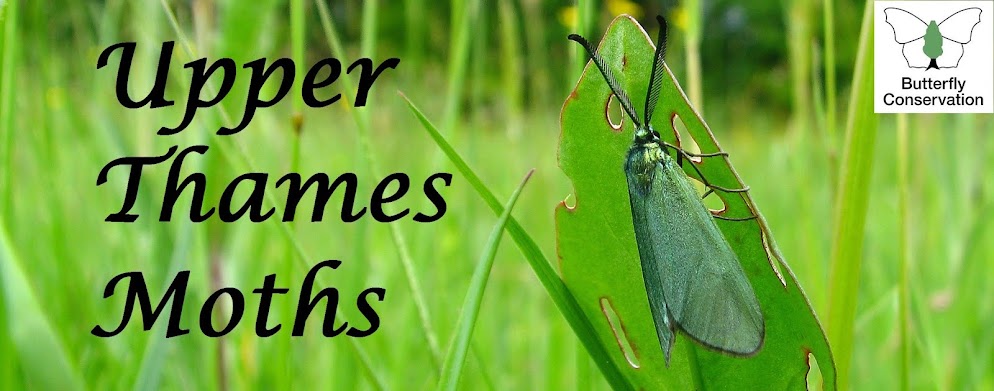....having looked at many Nemapogon cloacellas over the years, the only example of Nemapogon last night was ruricolella, a garden first.
Another couple of garden firsts were Delplanqueia dilutella and Brachmia blandella
There were also two very blackish quite large geometridae, examples of which I have not seen before. Judging by the way they hold their wings, are these two Satin Beauty? They don't look like the Satin Beauty I have seen here in the past.
Is the following very black presumed gelechiid identifiable from this photo? The white area is missing scales and another moth that disappeared!
And finally... I have a couple of tortrix moths in pots awaiting photographs. One looks like A. logiana - is quite a whitish tortrix at this time of year likely to be logiana rather than kockiella? The other looks like A. ferrugana/notana, but under a magnifying glass, there are obvious raised scale tufts - does this make it ferrugana rather than notana? I'll try and upload some photos later.
Edit: photos
 |
| Feisty and blurred! The white marks look like raised scale tufts |
Adam Bassett









Hello Adam, it would be really useful if you could hold on to the Delplanqueia for closer inspection. It will almost certainly be inscriptella rather than dilutella following a species split a few years ago (all Bucks records so far have proved to be inscriptella). The moth seems to have been undergoing quite an expansion in range because I've had three in the garden over the past week, well away from the chalk.
ReplyDeleteYour macros are indeed both Satin Beauty (females), but I'm afraid I can't really help with the gelechid other than to surmise that it might be a Gelechia, possibly G.nigra.
I think Acleris kochiella and Acleris logiana can usually be told apart from a decent image. I get both in the garden and have had three or four kochiella from our elms in the past few days but no sign yet of logiana, for what that's worth. I'm afraid ferrugana and notana will need the chop to separate.
Thanks Dave. I thought you were going to say that, as I was reading about inscriptella, so went to pot it and it flew off into the patio vegetation somewhere, frustrating!
DeleteI have now posted some photos of the two tortrix moths. All mine sent for dissection have been ferrugana. I read somewhere that on fresh male ferrugana, raised scale tufts can be used as a distinguishing criteria from notana - is this not correct?
No idea on the scale tufts. Most in your area will be ferrugana, but notana is there also. Keep all Delplanqueias in future for me, I need to do some vesica eversions this Winter.
DeleteHi Adam, The Hants Moths website has an image of logiana very close to your example and I suspect that's what it is, but I'd still be tempted to get it closely examined for a certain ID.
ReplyDeleteRegarding ferrugana/notana, the notes in the micro field-guide suggest that on fresh moths it is the scale-tuft which makes up the black dot close to the dorsum (very clear in your picture) which is prominent in ferrugana but small or absent in notana, suggesting that your moth is more likely to be the far more common ferrugana, but there's still an element of doubt so far as I'm concerned!
OK Dave, well at least these two are potted. Still annoyed that the Delplanqueia managed to fly between the pot and the lid from a curved surface on my bench.
Delete